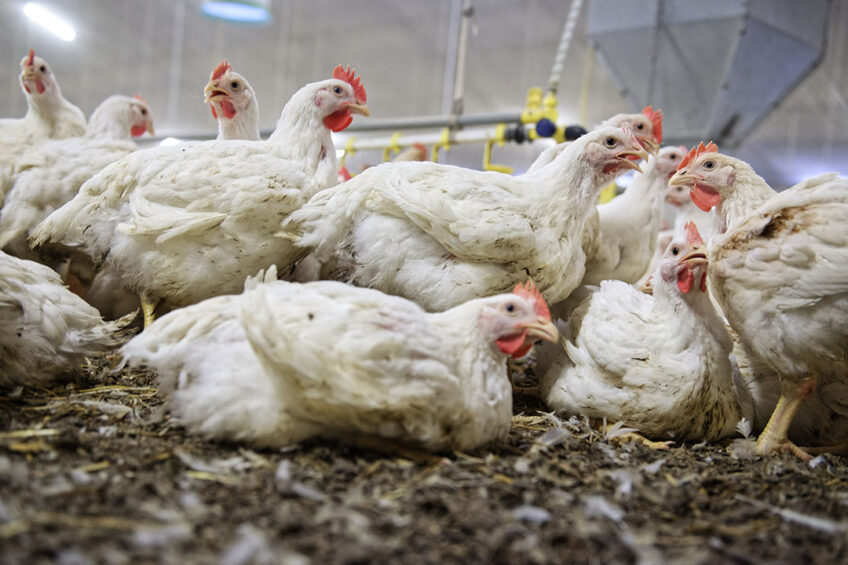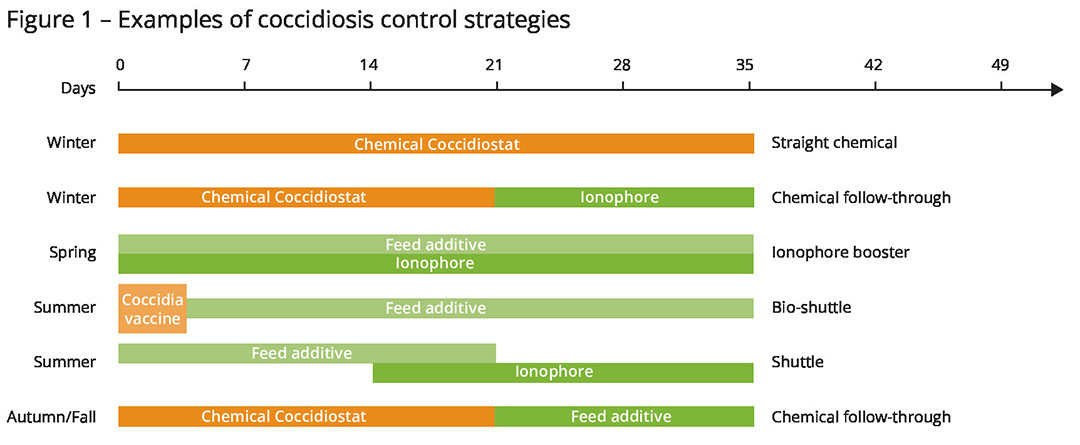How to optimise your coccidiosis management

Coccidiosis is a hard nut to crack as the disease-causing protozoa has a complex life cycle and the tendency to become insensitive to some treatments. Tackling the Eimeria bug is a challenge and coccidiosis management needs constant tweaks, including attention to good overall bird health.
Coccidia are found anywhere that poultry are raised. The estimated cost of coccidiosis globally is between US$ 9.2 and 15.6 billion, or approximately US$ 0.2 per chicken, derived from performance and mortality losses and the cost of prophylactics and therapeutics. Additional economic impact can also be estimated based on secondary challenges associated with coccidiosis.
In poultry, there are 7 Eimeria species of the protozoal parasite coccidia that infect different regions of the intestinal tract. Regardless of the site of infection, Eimeria have a complex life cycle that includes stages within the bird and in the environment. Depending on the Eimeria species, site of infection and life cycle stage, some prevention strategies may be more effective than others.
Evolution rotation and shuttle programmes
Synthetic chemicals, ionophores and the combination of the 2 have been available for coccidiosis control for more than 50 years, however, no new anticoccidial drugs have been developed for some time. This makes optimising currently available coccidiosis strategies even more critical.
Not all synthetic chemicals have known modes of action but, in general, chemicals disrupt Eimeria by altering their metabolism during their intracellular life cycle stages, and ionophores disrupt Eimeria by altering osmotic balance during their extracellular life cycle stages. These 2 anticoccidial drugs have often been used in combination because of their complementary modes of action and the additional coverage ionophores give for Gram-positive bacteria. This is advantageous because coccidiosis make birds susceptible to clostridial enteritis resulting in high mortality rates and production losses. Thus, using chemicals with ionophores or ionophores alone can provide coverage for both coccidiosis and clostridial enteritis. Although the combination of chemicals and ionophores has been used successfully for several decades to combat coccidiosis, the development of resistance has been reported.
Chemical anticoccidials tend to induce resistance more rapidly compared with ionophores because of their mode of action during the intracellular life cycle of Eimeria. However, this resistance may be masked when using chemical and ionophore blends as Eimeria that are resistant to chemicals may still be responsive to the ionophore making the overall prophylactic use effective. However, the challenge with ionophores is that they have a very narrow safety range, can contribute to reduced performance and may impact heat tolerance. Many producers have implemented programmes that rotate anticoccidials between flocks (rotation programmes) or use different anticoccidials in starter, grower and finisher rations (shuttle programmes) to maintain or improve Eimeria drug sensitivity (Figure 1).

Vaccine
Another strategy to improve drug sensitivity has been to switch from anticoccidial drugs to using a coccidia vaccine. Coccidia vaccines are based on specific Eimeria species and induce immunity 3-4 weeks after vaccination. Introducing non-resistant Eimeria via vaccination can repopulate the environment to restore drug sensitivity. However, the effectiveness of this strategy to restore environmental Eimeria drug sensitivity may be impacted by litter management strategies (e.g., raising birds on fresh litter with each cycle or using re-used litter for several cycles).
One drawback with coccidia vaccines is that they tend to impact performance during the time the birds are acquiring immunity. This associated performance loss is more challenging to overcome when birds are marketed at a younger age compared to those marketed at an older age because there is less time to regain that lost performance. Recovering performance loss associated with vaccination is one area in which feed additives can be used as part of a coccidiosis management strategy.
Feed additives such as probiotics, prebiotics and phytogenics have become part of many coccidiosis management strategies because of their compliance with programmes like No Antibiotics Ever or ‘antibiotic-free’ and for their unique modes of action that complement different rotation and shuttle programmes (Table 1). For example, Eimeria disrupt the intestine and nutrients leak into the lumen; live probiotics can help to overcome this by improving intestinal integrity, whereas microbial metabolic modulators can redirect the leaked nutrients towards beneficial microbial metabolism.
If resistance is becoming a concern and an alternative is needed, using phytogenic-saponin blends may be a way to take a break from stronger chemicals which could keep the anticoccidials more effective in the longer term. Incorporating feed additives into rotation, shuttle or bio-shuttle programmes can help keep current anticoccidial drugs effective while maintaining performance level when other strategies are implemented.
Optimise your current rotation or shuttle programme
Identifying the gap in the current rotation or shuttle programme is key to determining what strategy would best suit your needs and many different programmes can be developed depending on what is needed given your current strategy. Additionally, identifying other challenges that may be enhancing enteric challenges, such as mycotoxins or sub-optimal vitamin levels, may form part of a differential diagnosis. By filling the gap with a comprehensive solution, producers can mitigate resistance and improve coverage thus reducing the predisposing factors associated with coccidiosis and clostridial enteritis.
 Beheer
Beheer







 WP Admin
WP Admin  Bewerk bericht
Bewerk bericht